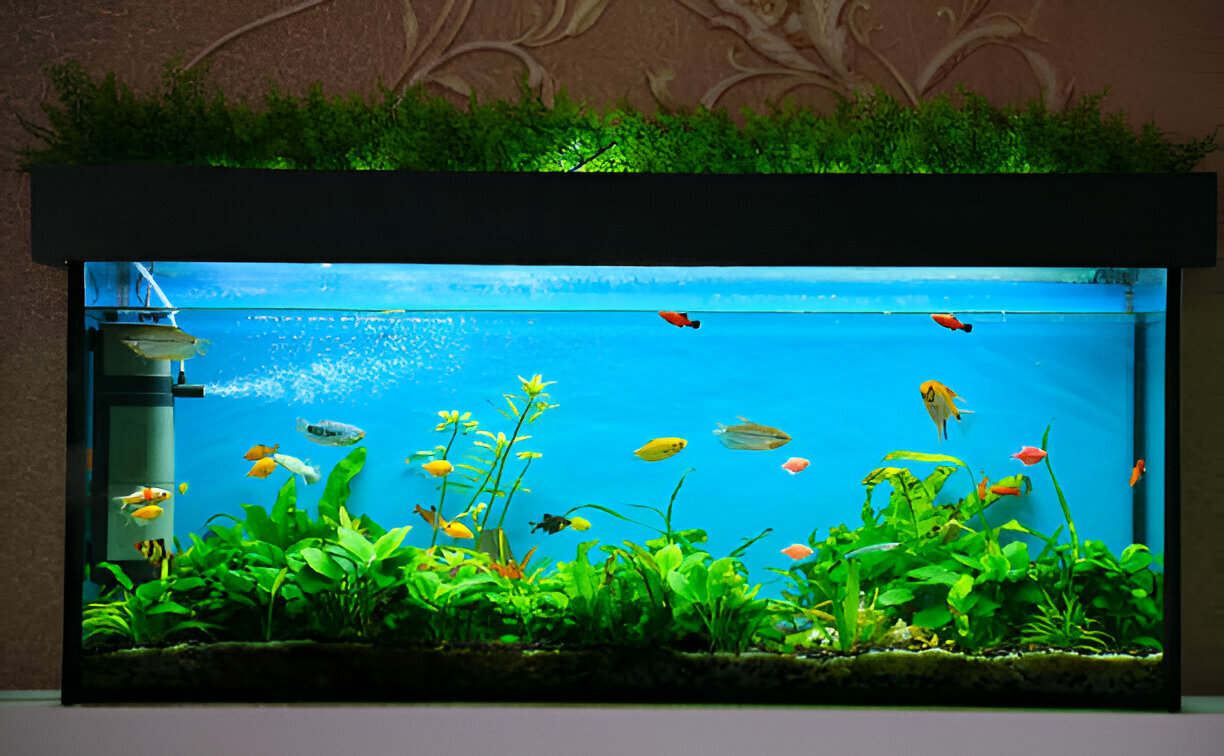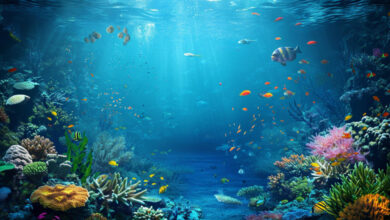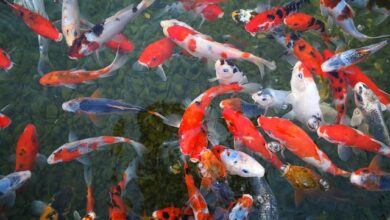The Art of Aquarium Fishkeeping: A Comprehensive Guide

Table of Contents
Imagine a slice of the ocean or a section of a tranquil river, encapsulated in the confines of your home. This is the allure of fishkeeping, a practice that has evolved from regal pastimes of old to a modern-day passion that combines the tranquility of nature and the thrill of pet companionship. In this extensive guide, we will plunge into the vast depths of Aquarium Fishkeeping, exploring every facet from selecting the right fish to creating stunning aquatic environments and ensuring the wellbeing of our underwater friends.
A Historical and Modern Evolution of Fishkeeping
Fishkeeping’s roots extend back thousands of years, with ancient Sumerians and Egyptians revered as some of the earliest aquarists. Initially, fish were kept for their ornamental value, believed to bring luck and prosperity. The 19th century ushered in a new era with the invention of the modern aquarium, replete with glass panes and aquatic ecosystems. Today, this hobby is an art, a science, and a vast industry. The impact of proper fish care has positive ripple effects on marine conservation and our understanding of oceans.
Selecting the Right Fish and Aquatic Life
The heartbeat of your aquarium lies in its inhabitants. Before the first splash, it’s crucial to consider several factors when selecting your aquatic creatures. Fish species selection should take into account compatibility with other inhabitants, as well as the tank size and environment. Each species has its needs, from specific water parameters to dietary requirements. Ensure you are prepared to meet these needs before bringing a new fish into your home.
Factors to Weigh in Fish Selection
When choosing fish, evaluating their size, temperament, diet, and preferred water conditions is essential. Research each species to understand its adult size, level of activity, and social behavior. Shoaling fish, for example, are happiest in groups, while solitary fish need ample personal space.
Compatibility and Tank Size Guidelines
Consider the ‘big picture’ of your aquarium. This is not just a house for individual fish but a shared community. Some species may act as natural predators or prey in the wild, which must be taken into consideration. Also, ensure your tank size is suitable for the number and types of fish you wish to house. A crowded tank can lead to stress, aggressive behavior, and a significant quality of life.
Setting Up Your Aquarium
Preparation is the starting point for an aquarium that is not just thriving but also visually captivating. A meticulously set up tank ensures the health and happiness of your aquatic friends, while also setting the stage for a breathtaking display.
The Guide to Aquarium Preparation
Begin with the right tank – large enough to accommodate the number and types of fish you desire. A filtration system is non-negotiable for maintaining water quality. Live plants not only contribute to the aesthetics but also to the oxygenation of the water and nutrient balance. And of course, don’t forget the substrate (gravel or sand) and lighting, which impact the entire ecosystem within the tank.
Water Chemistry and Temperature Control
Aquarium water chemistry can sound intimidating, but it’s a crucial aspect. The nitrogen cycle, for example, is fundamental for converting fish waste into less harmful substances. Temperature control with a reliable heater or cooler (depending on your geographic location and the needs of your species) ensures that the aquatic habitat remains stable and conducive to life.
Tank Maintenance and Health
Routine maintenance of your aquarium guarantees sustained life within its walls. Neglecting this aspect of Aquarium Fishkeeping can lead to a host of problems, which can be both disastrous and preventable with regular care.
Regular Maintenance Routines
Adopt a maintenance schedule that includes water changes, filter upkeep, and the cleaning of tank surfaces. This not only preserves water quality but also prevents the outbreak of diseases. It’s also an excellent opportunity for you to observe your fish closely and ensure their wellbeing.
Common Fish Diseases, Prevention, and Treatment
Fish, like all living creatures, are susceptible to illnesses. The key to managing these is through prevention. Ensure that your tank environment closely mirrors the species’ natural habitat and that new additions undergo a quarantine period. Observing any changes in your fish’s behavior can signal an underlying issue, and quick action with the appropriate care can often make all the difference.
Aquascaping and Decor
Aquascaping is the art of arranging aquatic plants, rocks, stones, and driftwood in an aesthetically pleasing manner. However, the benefits go beyond beauty. Properly set up structures can create hiding spaces and territories for your fish, mimicking their natural environment and reducing stress.
Importance of Aquascaping
Aquascaping provides an area of refuge and relaxation for your fish. It also influences the overall balance of your tank. Large open spaces allow for efficient movement and organization of social hierarchies, while strategically placed structures can reduce aggression and foster a peaceful coexistence.
Popular Aquascaping Styles and Tips
From the Dutch and nature aquarium styles to the simplicity of the Iwagumi layout, each has its beauty and benefits. When crafting your underwater world, ensure that the weight of your decor is safe for your aquarium’s glass or acrylic, and consider the future growth of live plants. Persistent trimming and training can maintain your aquascape’s beauty and balance.
Interactions and Observations
The joy of Aquarium Fishkeeping also comes from interaction and observation. Understanding the behavior of your fish and providing an enriching environment can turn a passive viewing experience into an active and rewarding one.
Understanding Fish Behavior and Social Dynamics
Fish, contrary to a popular myth, have unique behaviors and social dynamics. Some are territorial, while others form strong bonds. Observe and research your fish to better understand their needs and interactions. For instance, the predominant behaviors of certain species could indicate the need for additional hiding spots or the introduction of a companion.
Creating Enriching Environments for Active Fish
In the wild, the behavior of fish is intricate, and their environments offer a myriad of interactions. Replicating this complex web — through the addition of plants, rocks, driftwood, and perhaps even species-specific tankmates — creates an environment where these behaviors can flourish.
Sustainable Practices in Aquarium Fishkeeping
With the increasing awareness of environmental conservation, it’s important to discuss sustainable practices in fishkeeping. Respect for the ecosystem and responsible stewardship should be the hallmark of every aquarist.
Eco-friendly Tips for Reducing Environmental Impact
Small changes in your daily maintenance can add up to significant contributions to environmental conservation. Deliberate actions such as reducing water wastage during cleanings, using recycled materials wherever possible, and disposing of waste correctly are appreciated by not just the aquatic life in your care but by the broader ecosystem.
Responsible Sourcing of Fish and Aquarium Materials
The trade of ornamental fish and aquarium materials, if not regulated, can lead to overexploitation and habitat degradation. It’s vital to purchase from ethical suppliers who prioritize sustainable collection practices and have transparent supply chains. Additionally, consider the impact of materials like plastic and their disposal.
Conclusion
Fishkeeping is a practice that marries our human fascination with the unknown depths of water with the responsibility of stewards of the earth. With knowledge, care, and respect, aquarists can create a world within a world — one that not only brings joy and relaxation but also makes a positive impact on our environment.
Encourage lifelong learning in your Aquarium Fishkeeping adventure. Share your experiences, seek advice, and contribute to the growing body of knowledge within the community. And most importantly, instill in others the value of ethical care for our aquatic companions.
The depths of fishkeeping are as profound as the waters from which these marvels hail. With the proper groundwork and consistent care, you can ensure that every glance into your aquarium affords not just beauty but also the peace of mind that comes with being a diligent and mindful aquarist.
Check out more at our site for Best Pets for Home



